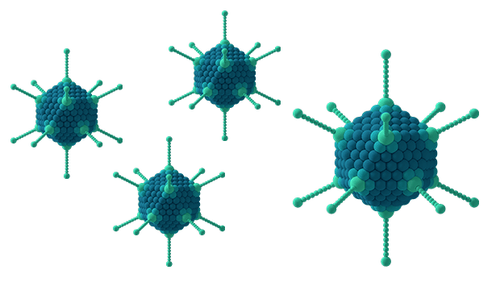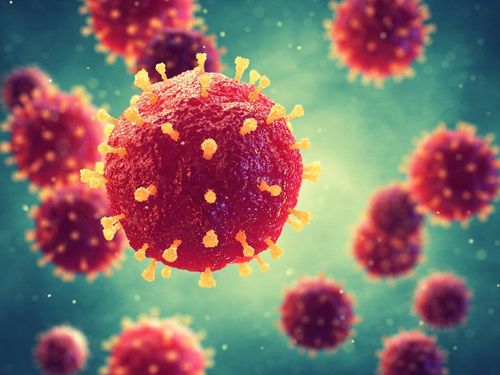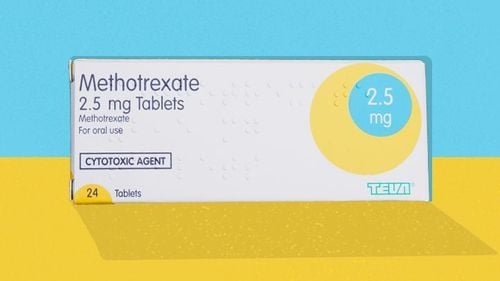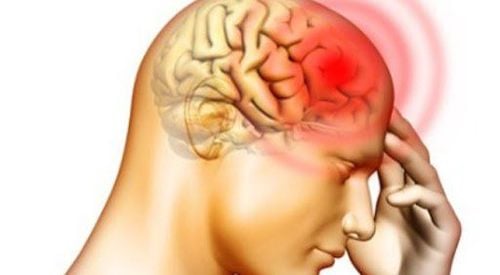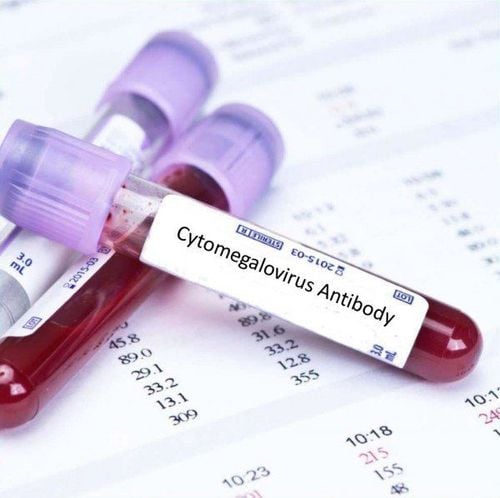This is an automatically translated article.
The article was written by MSc Vu Duy Dung - Doctor of Neurology, Department of General Internal Medicine - Vinmec Times City International Hospital.HSV-1 and HSV-2 infect nearly two-thirds of the world's population regardless of sex, geography, or climate. The ubiquitous nature of this viral infection is due to lifelong viral infection of the host, asymptomatic viral infection of the oral or genital mucosa, and low morbidity and mortality. Close person-to-person oral or genital contact is essential for transmission of HSV by mucosal or epidermal transmission of HSV.
HSV-2 infection usually requires genital contact. Recent literature suggests that HSV-1 and HSV-2 are interchangeable in terms of transmission and manifestation of human viral infection. For example, HSV-1 is increasingly found as primary genital tract infections, and it has also been well established that HSV-2 can cause encephalitis.
Socioeconomic status and age are the main factors influencing viral infection; Low socioeconomic status or living in developing countries is associated with an 80% to 90% seropositivity rate for HSV-1 or HSV-2 in adolescence. People in the industrialized middle class were seropositive later, and the seropositivity rate was only about 40%.
HSV can enter the CNS by several suggested mechanisms, including direct transmission via the olfactory nerve or trigeminal nerve, or, less likely, hematogenously from lesions far. The preference for the orbital and temporal frontal cortex suggests that direct transmission through the cranial nerves may be most likely.
1. Herpes Simplex Virus Encephalitis
The most common neurological manifestation of HSV-1 is encephalitis and of HSV-2 is meningitis, although HSV-2 encephalitis has also been well defined. This article uses the term HSV encephalitis to refer to encephalitis caused by HSV-1 or HSV-2. HSV encephalitis represents one of the most severe forms of encephalitis in the world.
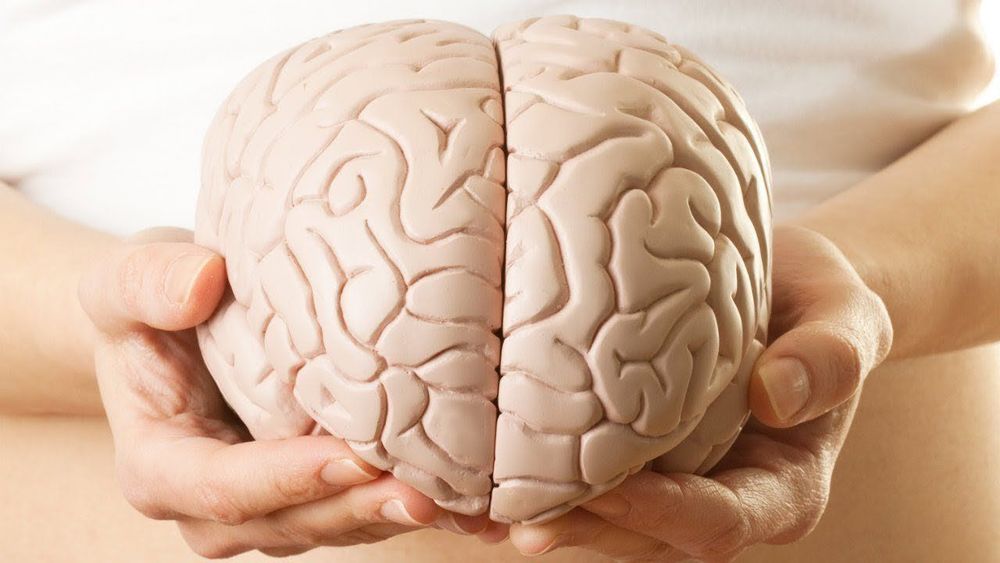
In the US, HSV encephalitis accounts for up to 20% of all confirmed viral encephalitis. In older children and adults, HSV encephalitis is likely due to reactivation of the underlying disease and viral transmission in neurons and then into the brain parenchyma, although the actual pathogenesis remains unclear.
The mortality rate of HSV encephalitis is up to 70% in untreated patients. Only 38% of patients treated with acyclovir returned to normal function. A 2014 study found a significant reduction in mortality with treatment and was reported to be 5.5% to 11.9%, but nearly 87% of 1-year survivors had moderate to severe sequelae. heavy.
A retrospective review demonstrated that the primary reasons for hospitalization for HSV encephalitis were seizures (32%), behavioral abnormalities (23%), loss of consciousness (13%), and confusion or disorientation (13%). Other common reasons for admission include fever, autonomic dysfunction, and dysphagia.
2. Diagnosis of neurological herpesvirus infection
The most common reason for delay in treatment is not considering HSV in the differential diagnosis, despite suggestive clinical symptoms. Delay in treatment is directly associated with higher rates of sequelae and mortality from HSV encephalitis.
Diagnosis of HSV infection requires testing of cerebrospinal fluid (CSF) to test cell counts, protein, glucose, and viral DNA. The String Amplification Reaction (PCR) assay has become the gold standard for the detection of both HSV-1 and HSV-2 and has widely replaced brain biopsies. HSV PCR has a sensitivity of 96% and a specificity of 99%.
CSF testing including cell counts, glucose, protein, and fungal and bacterial cultures is useful in evaluating other diagnostic possibilities, such as bacterial meningitis, and should also be done.
It is important to note that there is no leukocytosis and false-negative PCR, both of which can be present in the early stages of HSV encephalitis and in immunocompromised patients. A 2016 study demonstrated that 26% of patients (healthy or immunocompromised) with HSV encephalitis had normal CSF white blood cells (less than 5 cells/mm3).
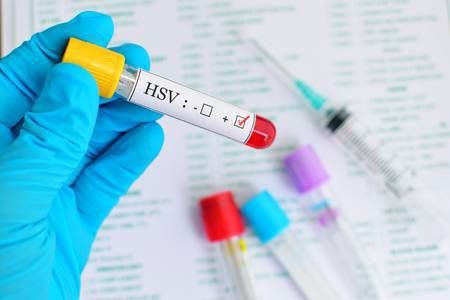
If suspicion is high, the patient should be continued on treatment and PCR HSV should be retested in 3 to 7 days. A 2011 study identified a correlation between a high initial viral DNA load in CSF and a longer duration of positive PCR; Persistent positive PCR may require a longer treatment period.
MRI can help diagnose HSV encephalitis using classic imaging findings. Characteristically, HSV encephalitis causes bleeding, necrosis, and edema in the medial temporal lobes and may spread to other regions of the limbic system, including the insula, gyrus, and inferior frontal cortex. However, it is important to know that up to 5% of patients with HSV encephalitis have a normal MRI; Therefore, imaging alone does not rule out the diagnosis of encephalitis.
HSV encephalitis accompanies both acute and chronic seizures. Resistant status epilepticus is an often severe consequence of HSV encephalitis and will be difficult to treat. There may be benefits to prolonged EEG monitoring in carefully selected patients to identify and treat seizures and status epilepticus.
3. Treatment of Herpesvirus of the nervous system
Treatment with intravenous acyclovir is critical to reducing mortality and sequelae from HSV encephalitis. The recommended dose is 10 mg/kg IV every 8 hours for 14 to 21 days.
New data are emerging on drug resistance in herpesvirus infections, particularly in organ transplant patients. Up to 28% of HSV-1 viruses in transplant patients have mutations in the genes encoding the viral thymidine kinase and DNA polymerase.
Clinicians should consider testing for acyclovir resistance when, despite antiretroviral therapy, a patient is clinically worsening, leukocytosis or more elevated, and imaging is progressive. When clinical suspicion of resistance worsens, clinicians should order acyclovir-sensitive tests to assess resistance.
When resistance is identified, other treatment options, such as foscarnet, may be used. A clinical case was reported in 2016 using brincidofovir for the successful treatment of acyclovir-resistant HSV-1 infection following stem cell transplantation. The use of steroids in HSV encephalitis is controversial, and there are currently no guidelines recommending their use. Some literature suggests benefit, especially in patients with cerebral edema.

4. Future trends
Targeted antibodies to specific neurogenic antigens are increasingly recognized as a common cause of encephalitis. HSV encephalitis usually has a monophasic course, but recurrent episodes have been reported despite appropriate acyclovir therapy.
Recent literature suggests that up to 20% of patients with HSV encephalitis may eventually develop an autoimmune encephalitis (which may include anti-N-methyl-D-aspartate [NMDA] receptor antibodies). ) may resemble a recurrent episode of HSV encephalitis.
This syndrome occurs 2 to 6 weeks after HSV encephalitis and is characterized as a postinfectious autoimmune disease that causes dyskinesia in children and psychiatric symptoms in adults.
Increasing evidence supports an association between HSV encephalitis and later progression of autoimmune neuropathy, but the mechanism by which this autoimmune progression follows HSV infection has not been clearly defined. clear.
New viral tests, including next-generation sequencing, have produced interesting results in discovering the characteristics of new viruses; detection of antiviral drug resistance; and to study viral diversity, evolution, and microbial transmission in the CSF.
This technology may be used in the future in herpesvirus infections but is currently limited by the fact that viral DNA is rife in the human CSF.
Please dial HOTLINE for more information or register for an appointment HERE. Download MyVinmec app to make appointments faster and to manage your bookings easily.
Articles source references:
Baldwin KJ, Cummings CL. Herpesvirus Infections of the Nervous System. Continuum (Minneap Minn) 2018;24(5, Neuroinfectious Disease):1349-1369.





